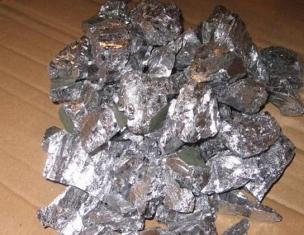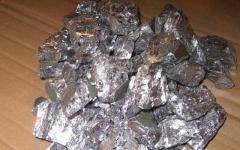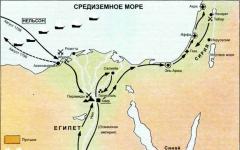Environmental problems of Kazakhstan.
Kazakhstan has a very vulnerable natural environment. The territory of the republic is mainly composed of steppes, semi-deserts and deserts. There are unique inland seas and lakes, such as the Caspian, Aral, Balkhash, Zaysan, Alakol.
As a result of anthropogenic loads, the natural ability to natural environment ensure the future economic and social development countries
The extensive development of agricultural production has left its mark in the form of land degradation and landscape depletion; more than 60% of the country's territory is subject to severe desertification, which leads to a decrease in soil fertility and, as a consequence, to a reduction in the productivity of livestock and crop production.
Over 40 years of exploitation of virgin and fallow lands, 1.2 billion tons of humus have been lost as a result of wind and water erosion.
Before the eyes of one generation, the area almost halved Aral Sea.
Intensive and irrational development of irrigated agriculture, as well as regulation of runoff in an arid climate, has led to water shortages in small and large rivers southern region, such as Ili, Syrdarya, etc.
A similar fate awaits Lake Balkhash. With the republic's water requirement of 100 km3 per year, the existing supply is 34.6 km3. In terms of water availability per capita, Kazakhstan ranks last among the CIS countries.
Every year, more than 200 million m3 of contaminated wastewater is discharged into surface water bodies of the republic.
More than 3 thousand sources of pollution have been identified groundwater, whose areas range from several to hundreds of square kilometers.
Most processing and energy complexes has imperfect technology, morally and physically worn-out fixed production assets, which contributes to an increase in the number harmful emissions. At the beginning of the 90s, about 6 million tons of pollution were annually released into the atmosphere (50% - thermal power engineering, 20% - ferrous metallurgy, 13% - non-ferrous metallurgy, 4% - chemistry and petrochemistry). Most zones of high air pollution coincide with places of concentrated human settlement. In the Karaganda and Pavlodar regions, each resident in 1993 accounted for 10.5 and 7.7 tons of harmful emissions, respectively
As a result of the activities of mining and metallurgical enterprises in Kazakhstan, more than 20 billion tons of industrial waste have accumulated with an annual intake of about 1 billion tons, including 230 million tons of radioactive waste. They are concentrated mainly in Karaganda - 29.4%, East Kazakhstan - 25.7%, Kostanay - 17% and Pavlodar - 14.6% regions. The lands of Kyzylorda, Atyrau and West Kazakhstan regions are also contaminated with heavy metals and oil products. Here, the volumes of abandoned and buried drill cuttings, oil-contaminated and low-radioactive waters, and the area of disturbed lands are difficult to estimate.
Slide No. 10
An environmental disaster threatens Aktau and the Caspian Sea. The plants of the industrial giant Caspian Mining and Metallurgical Combine (PGMK) dumped waste water into a basin located just a few kilometers from the city of Aktau, where the artificial lake Koshkar-Ata was formed. These plants were mainly involved in uranium enrichment. Over time, almost all the elements of the periodic table accumulated in the Koshkar-Ata reservoir. Including radioactive and toxic. Lake Koshkar-Ata and the Caspian Sea are separated from each other by a narrow coastal strip, no more than 8 km long, so there is a danger of polluting the Caspian Sea with the waters of the Koshkar-Ata tailings pond.
Slide No. 11
But in addition to the contamination of groundwater with toxic and radioactive substances, there is another problem associated with the Koshkar-Ata tailings dump. IN at the moment The lake is drying up because the factories of the former PGMK are idle and do not discharge water. Toxic dust forms on the dry shores of the lake, which the wind carries around.
Environmentalists in Mangistau face a difficult problem. If the lake's water level is maintained at the same level, toxic waste may be discharged into the Caspian Sea. If the lake is allowed to dry up, then all the lands and pastures around Aktau and the village of Akshukur will be contaminated with dust. But in addition to the contamination of groundwater with toxic and radioactive substances, there is another problem associated with the Koshkar-Ata tailings dump. At the moment, the lake is drying up because the factories of the former PGMK are idle and do not discharge water. Toxic dust forms on the dry shores of the lake, which the wind carries around.
Environmentalists in Mangistau face a difficult problem. If the lake's water level is maintained at the same level, toxic waste may be discharged into the Caspian Sea. If the lake is allowed to dry out, then all the lands and pastures around Aktau and the village of Akshukur will be contaminated with dust.
Slide No. 12
The oil and gas industry ranks first among industries in terms of investment volumes. Despite this, in the main areas of oil and gas production and oil refining - Atyrau and Mangistau regions - work is carried out using backward technologies and outdated equipment, which leads to accidents and oil leaks. Resulting in total area oil pollution in Western Kazakhstan is 194 thousand hectares, and the volume of spilled oil is more than 5 million tons.
Slide No. 13
The practice of flaring associated gas also causes significant environmental and economic damage. The increased thermal background and acidification of environmental components around the fields during gas combustion have negative impact on the soil, vegetation, and fauna of areas adjacent to oil complexes, making their “contribution” to the increase in the greenhouse effect. Irreversible gas losses amount to more than 740 million m3 per year. The dependence of the increased morbidity of the population in the area of the Tengiz oil and gas field (more than 6 times higher than regional indicators) on atmospheric air pollution with sulfur and nitrogen dioxides was noted.
Slide No. 14
As a result of the rising level of the Caspian Sea, more than 200 wells and oil fields were flooded, including the largest - Kalamkas and Karazhanbas, which is a threat not only to biological diversity (90% of the world's sturgeon stocks are concentrated in the Caspian Sea, large number species of avifauna, endemic - the Caspian seal), but also the entire ecosystem of the Caspian Sea. Over the past 10 years, the catch of commercial fish has decreased 10 times.
Slide No. 15
Vast territories of Kazakhstan have suffered from the activities of military training grounds and space technology launches. Between 1949 and 1991, 470 tests were carried out at the Semipalatinsk nuclear test site. nuclear explosions. It is impossible to accurately count the number of deaths; the number of irradiated people reached half a million people. On the territory of the former Semipalatinsk nuclear test site, about 2 million hectares of agricultural land are subject to radioactive contamination.
Slide No. 16
Intense pollution of air, water and soil, degradation of animals and flora, exhaustion natural resources led to the destruction of ecosystems, desertification and significant losses of biological and landscape diversity, increased morbidity and mortality of the population. The consequence of such changes is a decrease in the quality of life of the population and the unsustainable development of the republic. At the same time, government spending on environmental protection remains the lowest among Eurasian countries. They amount to no more than 0.5 US dollars per year per person.
Population health (medical, socio-economic, environmental position) and its condition when the environment changes. The relationship between indicators of environmental pollution and deterioration in public health. The impact of air pollution on public health. The influence of the quality and level of water supply on public health. The impact of desertification on public health. The influence of sources of radioactive contamination on public health. Priority measures to control and reduce risks from environmental pollution.
System public administration environmental protection. State policy and priorities in the field of environmental protection. Executive bodies those involved in environmental management, their tasks, functions and rights. Goals public policy in the field of environmental protection and rational use of natural resources. Main directions of policy for stabilizing environmental quality. The main directions of the National Strategy of the Republic of Kazakhstan and the action plan for the conservation and balanced use of biodiversity. Participation of the Republic of Kazakhstan in international environmental processes. Priorities in the field of the environment, their tasks.
Analysis of environmental policy in Kazakhstan (applicable for Central Asia) B.K. Esekin, Chief expert of the EU project ()

Conclusions: water management Low status and fragmented water management Unclear or unrealistic goals and outdated water quality standards Low tariffs are an obstacle to water saving, investment and technology Failure to take into account nature's needs for water Uncontrolled use of water in agriculture - the main consumer (80 %)


In the Central Asian countries in the EU, MPC Drinking water MPC Water HP and KB MPC Water RH MPC are not the same goals as in the EU! Unrealistic standards: comparing Kazakhstan with the EU

Water management in Europe (EU) For all countries, EU directives set targets for each water body Water resources are coordinated by one organization The scope of management covers the entire basin (catchment area) Authoritative Basin Councils or their equivalents Tariffs and standards stimulate water conservation

Recommendations: Stage 1 – 3 years Increase the status of water management: create National Councils, protection bodies water resources and Water Conservation Centers Strengthen Basin Councils Review standards (MPC) and link them with BAT (BAT). Review water use standards



Conclusions: atmospheric protection Outdated MPCs: unrealistic values and number (300), absence of the most dangerous MPCs Conflict between BAT (BAT) and MPE Payments and standards - no incentives for environmental protection and energy saving Outdated standards for vehicles (EURO-2? ) Ineffective fuel quality control Low status public transport Ineffective monitoring

Recommendations: Stage 1 - 3 years Go to new system MPC: instead of 300, approve a maximum of 14 approved by WHO and the EU Finalize the emission standardization system based on NTD (BAT) Increase payments for emissions, develop/revise energy consumption standards Strengthen requirements and control over fuel quality Make a decision on the implementation of EURO-4.5 Raise the status public transport


Conclusions: solid waste management Lack of targets for solid waste in programs and legislation (EU example) Lack of national strategies for solid waste Lack of economic and other incentives for reducing education and disposal, and for the reuse of solid waste Poor development of infrastructure Lack of information and education
 General, systemic problems: Lack of consistency and systematicity in environmental policy (changes every 2 years?) Lack or blurred goals in state and local programs Lack of effective administrative and economic incentives Lack of institutions and capacity to develop and implement programs Weak communication and public support
General, systemic problems: Lack of consistency and systematicity in environmental policy (changes every 2 years?) Lack or blurred goals in state and local programs Lack of effective administrative and economic incentives Lack of institutions and capacity to develop and implement programs Weak communication and public support

Additional information: Full Report (800 pages) and abridged (50 pages) with analysis of environmental policy - available on CD MEP website: Additional information: QUESTIONS?

To use presentation previews, create a Google account and log in to it: https://accounts.google.com
Slide captions:
Environmental problems of Kazakhstan. Karimova Gulbanu Kabkenovna School-lyceum at the Peregrine State Conservatory named after. M. Zhumabaeva.
Kazakhstan has a very vulnerable natural environment. The territory of the republic is mainly composed of steppes, semi-deserts and deserts, etc. As a result of anthropogenic loads, almost the entire territory of Kazakhstan has disrupted the natural ability of the natural environment to ensure the future economic and social development of the country
The extensive development of agricultural production has left its mark in the form of land degradation and landscape depletion; more than 60% of the country's territory is subject to severe desertification, which leads to a decrease in soil fertility and, as a consequence, to a reduction in the productivity of livestock and crop production.
Over 40 years of exploitation of virgin and fallow lands, 1.2 billion tons of humus have been lost as a result of wind and water erosion.
In Kazakhstan there are unique inland seas and lakes, such as the Caspian, Aral, Balkhash, Zaisan, Alakol. Before the eyes of one generation, the area of the Aral Sea has almost halved. Intensive and irrational development of irrigated agriculture, as well as regulation of flow in an arid climate, has led to water shortages in the basins of small and large rivers in the southern region, such as the Ili, Syrdarya, etc.
A similar fate awaits Lake Balkhash. With the republic's water requirement of 100 km3 per year, the existing supply is 34.6 km3. In terms of water availability per capita, Kazakhstan ranks last among the CIS countries.
Every year, more than 200 million m3 of contaminated wastewater is discharged into surface water bodies of the republic. More than 3 thousand foci of groundwater pollution have been identified, the areas of which range from several to hundreds of square kilometers.
An environmental disaster threatens Aktau and the Caspian Sea. The factories of the industrial giant Pri-Caspian Mining and Metallurgical Combine (PMMC) discharged wastewater into a basin located just a few kilometers from the city of Aktau, where the artificial lake Koshkar-Ata was formed. These plants were mainly involved in uranium enrichment. Over time, almost all the elements of the periodic table accumulated in the Koshkar-Ata reservoir. Including radioactive and toxic. Lake Koshkar-Ata and the Caspian Sea are separated from each other by a narrow coastal strip, no more than 8 km long, so there is a danger of polluting the Caspian Sea with the waters of the Koshkar-Ata tailings pond.
But in addition to the contamination of groundwater with toxic and radioactive substances, there is another problem associated with the Koshkar-Ata tailings dump. At the moment, the lake is drying up because the factories of the former PGMK are idle and do not discharge water. Toxic dust forms on the dry shores of the lake, which the wind carries around. Environmentalists in Mangistau face a difficult problem. If the lake's water level is maintained at the same level, toxic waste may be discharged into the Caspian Sea. If the lake is allowed to dry out, then all the lands and pastures around Aktau and the village of Akshukur will be contaminated with dust.
Most enterprises in the processing and energy complexes have imperfect technology, morally and physically worn-out main production assets, which contributes to an increase in the amount of harmful emissions. In the early 90s, about 6 million tons of pollution were annually released into the atmosphere (50% thermal power engineering, 20% ferrous metallurgy, 13% non-ferrous metallurgy, 4% chemistry and petrochemicals). Most zones of high air pollution coincide with places of concentrated human settlement. In the Karaganda and Pavlodar regions, each resident in 1993 accounted for 10.5 and 7.7 tons of harmful emissions, respectively
As a result of the activities of mining and metallurgical enterprises, more than 20 billion tons of industrial waste have accumulated on the territory of Kazakhstan, with an annual intake of about 1 billion tons, including 230 million tons of radioactive waste. They are concentrated mainly in Karaganda - 29.4%, East Kazakhstan - 25.7%, Kostanay - 17% and Pavlodar - 14.6% regions. The lands of Kyzylorda, Atyrau and West Kazakhstan regions are also contaminated with heavy metals and oil products. Here, the volumes of abandoned and buried drill cuttings, oil-contaminated and low-radioactive waters, and the area of disturbed lands are difficult to estimate.
The oil and gas industry ranks first among industries in terms of investment volumes. Despite this, in the main areas of oil and gas production and oil refining - Atyrau and Mangistau regions - work is carried out using backward technologies and outdated equipment, which leads to accidents and oil leaks. As a result, the total area of oil pollution in Western Kazakhstan is 194 thousand hectares, and the volume of spilled oil is more than 5 million tons.
The practice of flaring associated gas also causes significant environmental and economic damage. Increased thermal background and acidification of environmental components around fields during gas combustion have a negative impact on the soil, vegetation, and wildlife of areas adjacent to oil complexes, making their “contribution” to the increase in the greenhouse effect. Irreversible gas losses amount to more than 740 million m3 per year. The dependence of the increased morbidity of the population in the area of the Tengiz oil and gas field (more than 6 times higher than regional indicators) on atmospheric air pollution with sulfur and nitrogen dioxides was noted.
As a result of the rising level of the Caspian Sea, more than 200 wells and oil fields were flooded, including the largest - Kalamkas and Karazhanbas, which is a threat not only to biological diversity (90% of the world's sturgeon stocks are concentrated in the Caspian Sea, a large number of avifauna species, the endemic Caspian seal ), but also the entire ecosystem of the Caspian Sea. Over the past 10 years, the catch of commercial fish has decreased 10 times.
Vast territories of Kazakhstan have suffered from the activities of military training grounds and space technology launches. Between 1949 and 1991, 470 nuclear explosions were carried out at the Semipalatinsk nuclear test site. It is impossible to accurately count the number of deaths; the number of irradiated people reached half a million people. On the territory of the former Semipalatinsk nuclear test site, about 2 million hectares of agricultural land are subject to radioactive contamination.
Radiation pollution
The Ulba plant has accumulated about 100 thousand tons of waste contaminated with uranium and thorium, and the waste storage facility is located within the city limits of Ust-Kamenogorsk. There are only three repositories for nuclear waste in the republic, and all of them are located in the aquifer. Uranium ore mining was carried out without land reclamation, only in 1990-1991. 97 thousand tons of radioactive rocks were removed to the Moyynkum district of the Zhambyl region, and in total up to 3 million tons of contaminated waste accumulated here. It was the seriousness of the problem of radiation pollution that led to the fact that one of the first laws of sovereign Kazakhstan was the Decree of August 30, 1991, banning tests at the Semipalatinsk test site. The Ulba plant has accumulated about 100 thousand tons of waste contaminated with uranium and thorium, and the waste storage facility is located within the city limits of Ust-Kamenogorsk. There are only three repositories for nuclear waste in the republic, and all of them are located in the aquifer. Uranium ore mining was carried out without land reclamation, only in 1990-1991. 97 thousand tons of radioactive rocks were removed to the Moyynkum district of the Zhambyl region, and in total up to 3 million tons of contaminated waste accumulated here. It was the seriousness of the problem of radiation pollution that led to the fact that one of the first laws of sovereign Kazakhstan was the Decree of August 30, 1991, banning tests at the Semipalatinsk test site.
Ust-Kamenogorsk storage facility
Intense pollution of air, water and soil, degradation of flora and fauna, depletion of natural resources have led to the destruction of ecosystems, desertification and significant losses of biological and landscape diversity, increased morbidity and mortality of the population. The consequence of such changes is a decrease in the quality of life of the population and the unsustainable development of the republic. At the same time, government spending on environmental protection remains the lowest among Eurasian countries. They amount to no more than 0.5 US dollars per year per person.
Assessment of the environmental risk to public health in connection with anthropogenic pollution of the air basin of the city of Petropavlovsk Over the course of several decades, in the cities of North Kazakhstan region, it remains high level morbidity and mortality due to oncological pathologies, which is rightfully considered the main environmental problem region. One of the main reasons for the observed trends is the air pollution of industrial cities, caused by emissions into the atmosphere from numerous manufacturing enterprises and motor transport of significant amounts of solid and gaseous toxic substances as the main environment-forming component of the urban environment.
The greatest contribution to the environmental risk from the sum of suspended particles is made by two of the four enterprises: Access-Energo Petropavlovskaya CHPP-2 LLP and Small Engine Plant LLP. The results obtained indicate that carcinogens emitted by enterprises in our city do not have a direct negative impact to the extent that they cause the recorded high level of morbidity in the city
On the other hand, the city's population is constantly exposed to negative impact emissions of suspended substances into the atmosphere, which, as is known, are active adsorbents for finer toxic and carcinogenic substances. At the same time, the level of population risk of additional cases of mortality from exposure to suspended particles in the city of Petropavlovsk is so high that it may be the reason for the deterioration of the health of all age groups and abnormal morbidity (including cancer) of the population.
Kazakhstan has a very vulnerable natural environment. The territory of the republic is mainly composed of steppes, semi-deserts and deserts, etc. As a result of anthropogenic loads, almost the entire territory of Kazakhstan has disrupted the natural ability of the natural environment to ensure the future economic and social development of the country
In Kazakhstan there are unique inland seas and lakes, such as the Caspian, Aral, Balkhash, Zaisan, Alakol. Before the eyes of one generation, the area of the Aral Sea has almost halved. The intensive and irrational development of irrigated agriculture, as well as the regulation of runoff in an arid climate, has led to water shortages in the basins of small and large rivers in the southern region, such as the Ili, Syrdarya, etc. The intensive and irrational development of irrigated agriculture, as well as the regulation of runoff in an arid climate climate has led to water shortages in the basins of small and large rivers in the southern region, such as the Ili, Syrdarya, etc.

A similar fate awaits Lake Balkhash. With the republic's water requirement of 100 km3 per year, the existing supply is 34.6 km3. In terms of water availability per capita, Kazakhstan ranks last among the CIS countries. A similar fate awaits Lake Balkhash. With the republic's water requirement of 100 km3 per year, the existing supply is 34.6 km3. In terms of water availability per capita, Kazakhstan ranks last among the CIS countries.


An environmental disaster threatens Aktau and the Caspian Sea. The factories of the industrial giant Pri-Caspian Mining and Metallurgical Combine (PMMC) discharged wastewater into a basin located just a few kilometers from the city of Aktau, where the artificial lake Koshkar-Ata was formed. These plants were mainly involved in uranium enrichment. Over time, almost all the elements of the periodic table accumulated in the Koshkar-Ata reservoir. Including radioactive and toxic. Lake Koshkar-Ata and the Caspian Sea are separated from each other by a narrow coastal strip, no more than 8 km long, so there is a danger of polluting the Caspian Sea with the waters of the Koshkar-Ata tailings pond. An environmental disaster threatens Aktau and the Caspian Sea. The factories of the industrial giant Pri-Caspian Mining and Metallurgical Combine (PMMC) discharged wastewater into a basin located just a few kilometers from the city of Aktau, where the artificial lake Koshkar-Ata was formed. These plants were mainly involved in uranium enrichment. Over time, almost all the elements of the periodic table accumulated in the Koshkar-Ata reservoir. Including radioactive and toxic. Lake Koshkar-Ata and the Caspian Sea are separated from each other by a narrow coastal strip, no more than 8 km long, so there is a danger of polluting the Caspian Sea with the waters of the Koshkar-Ata tailings pond.

But in addition to the contamination of groundwater with toxic and radioactive substances, there is another problem associated with the Koshkar-Ata tailings dump. At the moment, the lake is drying up because the factories of the former PGMK are idle and do not discharge water. Toxic dust forms on the dry shores of the lake, which the wind carries around. Environmentalists in Mangistau face a difficult problem. If the lake's water level is maintained at the same level, toxic waste may be discharged into the Caspian Sea. If the lake is allowed to dry out, then all the lands and pastures around Aktau and the village of Akshukur will be contaminated with dust. But in addition to the contamination of groundwater with toxic and radioactive substances, there is another problem associated with the Koshkar-Ata tailings dump. At the moment, the lake is drying up because the factories of the former PGMK are idle and do not discharge water. Toxic dust forms on the dry shores of the lake, which the wind carries around. Environmentalists in Mangistau face a difficult problem. If the lake's water level is maintained at the same level, toxic waste may be discharged into the Caspian Sea. If the lake is allowed to dry out, then all the lands and pastures around Aktau and the village of Akshukur will be contaminated with dust.

Most enterprises in the processing and energy complexes have imperfect technology, morally and physically worn-out main production assets, which contributes to an increase in the amount of harmful emissions. In the early 90s, about 6 million tons of pollution were released into the atmosphere annually (50% from heat and power engineering, 20% from ferrous metallurgy, 13% from non-ferrous metallurgy, 4% from chemistry and petrochemistry). Most zones of high air pollution coincide with places of concentrated human settlement. In the Karaganda and Pavlodar regions, each resident in 1993 accounted for 10.5 and 7.7 tons of harmful emissions, respectively. Most enterprises in the processing and energy complexes have imperfect technology, morally and physically worn-out main production assets, which contributes to an increase in the amount of harmful emissions. In the early 90s, about 6 million tons of pollution were released into the atmosphere annually (50% from heat and power engineering, 20% from ferrous metallurgy, 13% from non-ferrous metallurgy, 4% from chemistry and petrochemistry). Most zones of high air pollution coincide with places of concentrated human settlement. In the Karaganda and Pavlodar regions, each resident in 1993 accounted for 10.5 and 7.7 tons of harmful emissions, respectively

As a result of the activities of mining and metallurgical enterprises, more than 20 billion tons of industrial waste have accumulated on the territory of Kazakhstan, with an annual intake of about 1 billion tons, including 230 million tons of radioactive waste. They are concentrated mainly in Karaganda - 29.4%, East Kazakhstan - 25.7%, Kostanay - 17% and Pavlodar - 14.6% regions. The lands of Kyzylorda, Atyrau and West Kazakhstan regions are also contaminated with heavy metals and oil products. Here, the volumes of abandoned and buried drill cuttings, oil-contaminated and low-radioactive waters, and the area of disturbed lands are difficult to estimate. As a result of the activities of mining and metallurgical enterprises, more than 20 billion tons of industrial waste have accumulated on the territory of Kazakhstan, with an annual intake of about 1 billion tons, including 230 million tons of radioactive waste. They are concentrated mainly in Karaganda - 29.4%, East Kazakhstan - 25.7%, Kostanay - 17% and Pavlodar - 14.6% regions. The lands of Kyzylorda, Atyrau and West Kazakhstan regions are also contaminated with heavy metals and oil products. Here, the volumes of abandoned and buried drill cuttings, oil-contaminated and low-radioactive waters, and the area of disturbed lands are difficult to estimate.

The oil and gas industry ranks first among industries in terms of investment volumes. Despite this, in the main areas of oil and gas production and oil refining - Atyrau and Mangistau regions - work is carried out using backward technologies and outdated equipment, which leads to accidents and oil leaks. As a result, the total area of oil pollution in Western Kazakhstan is 194 thousand hectares, and the volume of spilled oil is more than 5 million tons. The oil and gas industry ranks first among industries in terms of investment volumes. Despite this, in the main areas of oil and gas production and oil refining - Atyrau and Mangistau regions - work is carried out using backward technologies and outdated equipment, which leads to accidents and oil leaks. As a result, the total area of oil pollution in Western Kazakhstan is 194 thousand hectares, and the volume of spilled oil is more than 5 million tons.

The practice of flaring associated gas also causes significant environmental and economic damage. The increased thermal background and acidification of environmental components around the fields during gas combustion have a negative impact on the soil, vegetation, and fauna of the areas adjacent to the oil complexes, making their “contribution” to the increase in the greenhouse effect. Irreversible gas losses amount to more than 740 million m3 per year . The dependence of the increased morbidity of the population in the area of the Tengiz oil and gas field (more than 6 times higher than regional indicators) on atmospheric air pollution with sulfur and nitrogen dioxides was noted. The practice of flaring associated gas also causes significant environmental and economic damage. The increased thermal background and acidification of environmental components around the fields during gas combustion have a negative impact on the soil, vegetation, and fauna of the areas adjacent to the oil complexes, making their “contribution” to the increase in the greenhouse effect. Irreversible gas losses amount to more than 740 million m3 per year . The dependence of the increased morbidity of the population in the area of the Tengiz oil and gas field (more than 6 times higher than regional indicators) on atmospheric air pollution with sulfur and nitrogen dioxides was noted.

As a result of the rising level of the Caspian Sea, more than 200 wells and oil fields were flooded, including the largest - Kalamkas and Karazhanbas, which is a threat not only to biological diversity (90% of the world's sturgeon stocks are concentrated in the Caspian Sea, a large number of avifauna species, the endemic Caspian seal ), but also the entire ecosystem of the Caspian Sea. Over the past 10 years, the catch of commercial fish has decreased 10 times. As a result of the rising level of the Caspian Sea, more than 200 wells and oil fields were flooded, including the largest - Kalamkas and Karazhanbas, which is a threat not only to biological diversity (90% of the world's sturgeon stocks are concentrated in the Caspian Sea, a large number of avifauna species, the endemic Caspian seal ), but also the entire ecosystem of the Caspian Sea. Over the past 10 years, the catch of commercial fish has decreased 10 times.

Vast territories of Kazakhstan have suffered from the activities of military training grounds and space technology launches. Between 1949 and 1991, 470 nuclear explosions were carried out at the Semipalatinsk nuclear test site. It is impossible to accurately count the number of deaths; the number of irradiated people reached half a million people. On the territory of the former Semipalatinsk nuclear test site, about 2 million hectares of agricultural land are subject to radioactive contamination. Vast territories of Kazakhstan have suffered from the activities of military training grounds and space technology launches. Between 1949 and 1991, 470 nuclear explosions were carried out at the Semipalatinsk nuclear test site. It is impossible to accurately count the number of deaths; the number of irradiated people reached half a million people. On the territory of the former Semipalatinsk nuclear test site, about 2 million hectares of agricultural land are subject to radioactive contamination.









